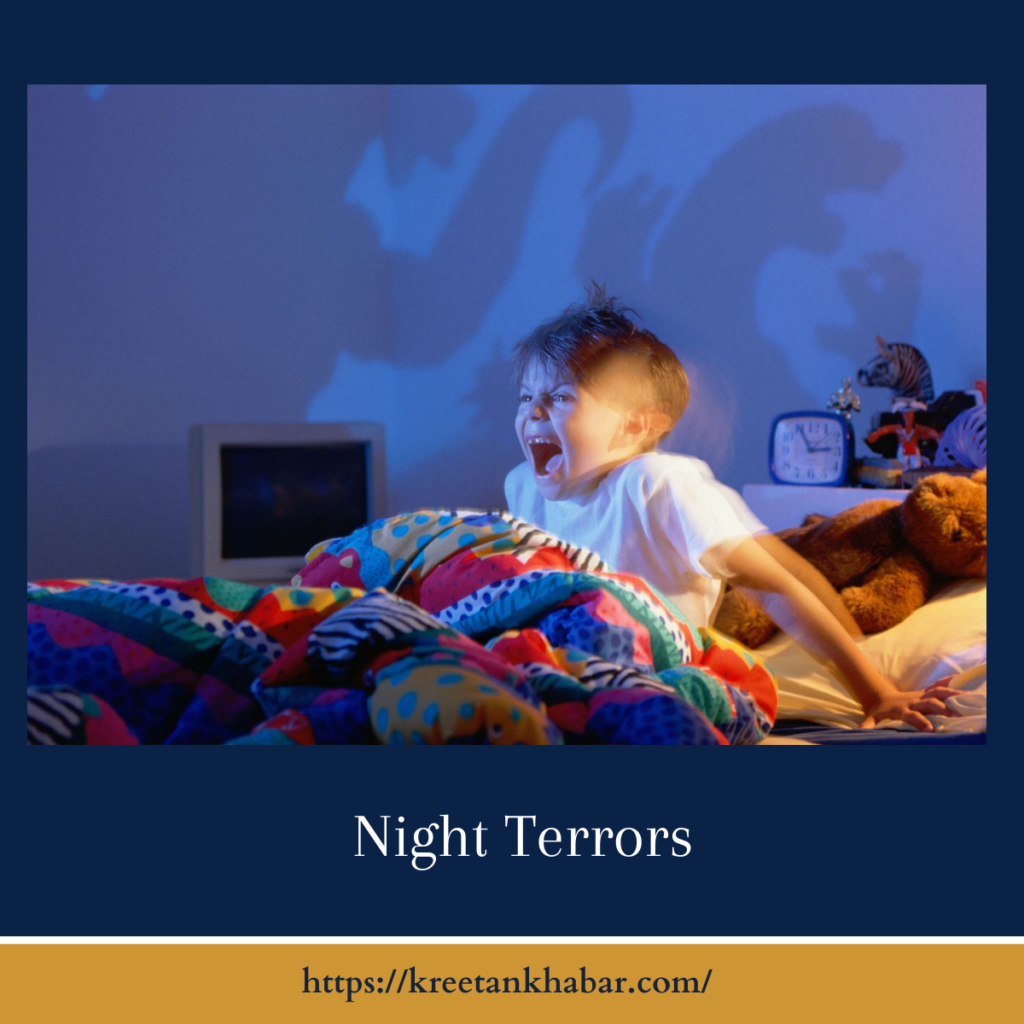Night Terrors: Navigating the Abyss of Nocturnal Fear”
Introduction:
In the hushed hours of the night, where dreams and nightmares intertwine, there exists a unique and perplexing phenomenon known as night terrors(also known as Sleep Terrors). Unlike the common bad dream, night terrors plunge individuals into a realm of heightened fear, leaving them caught in a disorienting dance between sleep and wakefulness. As we embark on an exploration of night terrors, we unravel the mysteries of this nocturnal abyss, seeking to understand the experiences, causes, and the profound impact that these episodes can have on the sleepers who traverse the shadowy landscapes of the night.

The Nature of Night Terrors:
Night terrors, also referred to as sleep terrors, stand as a distinct entity within the realm of sleep disorders. These episodes are characterized by sudden and intense fear, often accompanied by physical manifestations such as rapid heart rate, sweating, and a sense of impending doom. Unlike nightmares, night terrors typically occur during non-REM (rapid eye movement) sleep, making them less likely to be remembered upon waking.
The Silent Struggle: What Happens During Night Terrors
Night terrors unfold like a silent, internal struggle. The individual may abruptly sit up in bed, scream, or display signs of extreme distress, all while remaining in a state of deep sleep. Despite appearing awake, the person experiencing a Sleep terror is usually unresponsive to external stimuli and may have little to no recollection of the episode upon awakening.
The Predominance in Childhood:
Night terrors are more prevalent in childhood, with the majority of cases occurring between the ages of 3 and 12. While most children outgrow night terrors as they mature, some individuals continue to experience these episodes into adolescence and adulthood, highlighting the variability and complexity of this sleep disorder.
The Labyrinth of Causes:
The origins of night terrors are diverse and multifaceted. Genetics, family history, and underlying sleep disorders can contribute to an individual’s susceptibility to night terrors. Factors such as sleep deprivation, fever, and certain medications may act as triggers, creating a complex labyrinth of causative elements that researchers and sleep specialists continue to navigate.
The Impact Beyond the Night:
The effects of Sleep terrors extend far beyond the nocturnal hours. The abrupt and intense nature of these episodes can lead to daytime fatigue, impaired daily functioning, and an overall diminished quality of life. Additionally, the emotional toll on both the individual experiencing night terrors and their loved ones can create an undercurrent of anxiety and uncertainty.
Coping Mechanisms and Support:
Living with Sleep terrors necessitates coping mechanisms and a supportive environment. Establishing consistent sleep routines, creating a calm and comfortable sleep environment, and seeking professional guidance are among the strategies employed to minimize the impact of Sleep terrors on daily life.
Empathy and Understanding:
Empathy plays a crucial role in navigating the challenges posed by Sleep terrors. Family members, partners, and friends who understand the nature of night terrors can provide valuable support, creating a safe space for individuals to share their experiences and seek comfort during the aftermath of these nocturnal episodes.
Conclusion:
In the shadowy realms where the conscious mind surrenders to the mysteries of sleep, night terrors emerge as silent specters, casting individuals into a realm of inexplicable fear. As we unravel the enigma of Sleep terrors, we gain insights into the complexities of the human mind navigating the nocturnal abyss. Beyond the scientific explanations, Sleep terrors beckon us to approach the shadows of the night with empathy, understanding, and a commitment to supporting those who traverse the labyrinth of nocturnal fear.
Read also : Exploring the Delightful Boost of the Green Tea Shot 2023